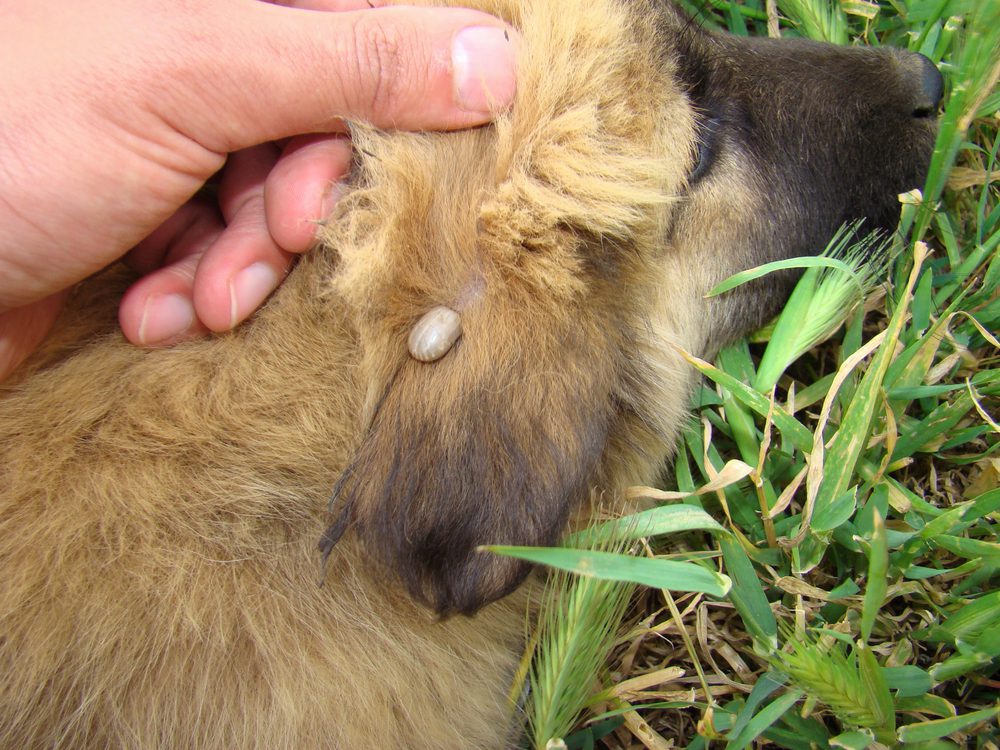Did you know that this disease can be very dangerous?
Unfortunately, tick bites can be fatal to dogs that aren’t protected by flea and tick vaccines. As you probably know, these are parasites that attack both animals and humans, feed on blood, and transmit diseases that can even cause death. Tick diseases occur when these infected parasites bite an animal or a human.
They can live all over the world and in all parts of the United States. So, if you want to prevent and combat these complications caused by these bites, you should definitely talk to a veterinarian for vaccination and other medical treatments.
The most common diseases caused by these insect bites are Canine Lyme Disease, Canine Ehrlichiosis, Canine Anaplasmosis, Rocky Mountain Spotted Fever, Canine Babesiosis, and Canine Bartonellosis.
So, here are some things that you should know about tick diseases in dogs and how to prevent them. Read on for more info and keep your pet safe!

How canine tick diseases occur
Before talking about these diseases, it’s very important to understand how they occur and what is the role of ticks in this process. So, that being said, they are actually tiny parasites that live on the outside of an animal (and human), feed on their blood, and can be found all over the world, especially in warm, humid climates. They are about 3 to 5 mm long but can become bigger after they feed. Just like other mites, ticks have four stages of their lifecycle, namely egg, larva, nymph, and adult.
Ticks attach to pets by inserting their mouthparts into their skin, feeding on their blood. During this process, they can deposit a tiny organism that causes infections or other diseases that can be fatal to your beloved furry friend, especially if they haven’t been vaccinated against mites. If these parasites aren’t eliminated within 48 hours (or less), they can lead to severe complications.
However, if you notice anything strange in your dog’s behavior or suspect that they have been bitten by a tick, you should see a veterinarian as soon as possible. They can help you remove the insect and prescribe the appropriate treatment.
Canine Lyme Disease
Canine Lyme Disease, also known as Lyme borreliosis, is one of the most common diseases that can be caused by tick bites. Unfortunately, some dogs show no symptoms, so it may be quite difficult (or too late) for you to find out the problem. However, Canine Lyme Disease is becoming more common in the United States than you probably thought.
If your dog develops Canine Lyme Disease you have to look out for these symptoms, namely fever, intermittent leg lameness, lethargy, vomiting, difficulty breathing, swollen lymph nodes, and sudden weight loss. Lameness occurs when your pet’s joints are inflamed, swollen, and painful and it can last for up to five days and recurs a few days or weeks later.
This disease appears when a Borrelia-carrying tick bites your dog and stays attached for 48 hours (or less, in some cases). Canine Lyme Disease can be treated with antibiotics prescribed by your veterinarian (even though it doesn’t always eliminate the infection).
Nevertheless, if you want to prevent this canine disease, there is actually a Lyme vaccine that can help your dog stay safe. So, try to talk to your veterinarian for more details and recommendations.
Canine Ehrlichiosis
Canine Ehrlichiosis is an infection caused by the brown dog tick (Rhipicephalus sanguineous), American dog tick (Dermacentor variabilis), and deer tick. This infection usually severely affects the German Shepherd and Doberman Pinschers dog breeds. Unfortunately, this disease is one of the most common in dogs throughout the United States and Canada.
This disease can worsen gradually, from mild symptoms to severe complications. So, the most common symptoms of Canine Ehrlichiosis are fever, swollen lymph nodes, sudden weight loss, bleeding, or other neurological issues.
Sadly, it may be quite difficult to diagnose infected dogs that have mild symptoms that aren’t yet visible. If your dog suffers from this disease, your veterinarian will prescribe you antibiotics that are actually very effective.
These diseases can also be found in humans and there’s no vaccine against it yet, so try to do your best to keep yourself and your pet safe.
Anaplasmosis in Dogs
Anaplasmosis is a disease caused by two types of bacteria, namely the first is Anaplasma phagocytophilum, which infects white blood cells in both animals and humans, and the second one is Anaplasma platys, which can be found in dogs, affecting their platelets. This infection is carried by the deer tick and western black-legged tick.
Symptoms can vary from mild to severe and the most common issues are fever, lameness, lethargy, lack of appetite, diarrhea, vomiting, and coughing.
Canine Anaplasmosis can be treated with special antibiotics prescribed by your veterinarian, but in some cases, dogs can be reinfected. That’s why it’s important to follow the recommendations of your vet to prevent reinfection.
Rocky Mountain Spotted Fever (RMSF)
Rocky Mountain Spotted Fever (RMSF) is a sickness caused by an infectious bacterium called Rickettsia rickettsia and carried by the American dog tick and the brown dog tick. Dogs that live in wooded or a high population of ticks areas are more likely to get infected with Rocky Mountain Spotted Fever (RMSF).
Symptoms are usually mild and they include fever, vomiting, diarrhea, coughing, bleeding, and difficulty breathing. Unfortunately, in some cases, dogs who suffer from Rocky Mountain Spotted Fever must be hospitalized because of bleeding and other severe symptoms, but in general, RMSF can be treated with antibiotics.

Canine Babesiosis
Canine Babesia infection or babesiosis is an illness caused by tick bites that can lead to anemia in dogs. This disease can occur in any dog breed in the world. Being a protozoal disease, it attacks the red blood cells in your pet’s body.
Many people don’t know this, but Canine Babesia can also be transmitted when an infected animal bites another animal or through blood transfusions. So, try to pay more attention to your dog’s behavior when you are in public spaces, and don’t skip regular vet checkups.
The most common symptom are lethargy, fever, swollen lymph nodes, and anemia. This disease can be treated with antiprotozoal drugs and sometimes antibiotics.
Canine Bartonellosis
Canine Bartonellosis is another infectious sickness caused by tick bites. Herding dog breeds are more likely to develop this disease because they are more exposed to the environment in which these insects live.
So, the most common symptoms of Canine Bartonellosis are lameness, eye problems, neurological issues, and swollen lymph nodes. This disease can be treated with an appropriate antibiotic recommended by your veterinarian. Moreover, it’s very important to remember that this disease can be contracted by pet owners as well.
You may also be interested in 9 Best Dog Breeds for Small Living Spaces.












